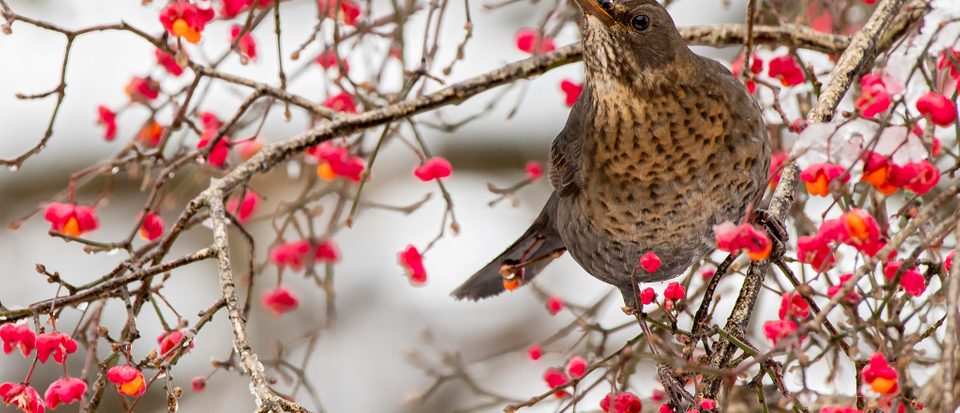
Autumn really starts to kick in, in October. Most flowering plants have finished, with just a few straggling remains holding out until the first frosts. You may see the odd butterfly, hoverfly, bumblebee or queen wasp, but everything else should be tucked away, hibernating.
The aim of the wildlife gardener in autumn is to create a safe haven for as many hibernating species as possible. And the more wildlife that overwinters successfully in your garden, the more there will be to tackle pests such as aphids, in spring.
But don’t forget those that don’t hibernate. With berries and seeds taking centre stage, numbers of birds in your garden may drop for a few weeks as there is more natural food for them in the wild. But the more seeds and berries you leave in your garden, the more species will take advantage of them when they need them.
More October wildlife gardening ideas:
October wildlife inspiration
Plants featured in this video
1
Spindle fruits
Spindle fruits (known as arils) are absolutely beautiful. The pink outer casing gradually splits to reveal bright orange fleshy fruits, and both remain on the branches for some time, adding to an already gorgeous display thanks to the red-orange colour of its autumn leaves. Spindle fruits are eaten by a number of birds, including blackbirds and robins, adding to its value as a wildlife plant.
More like this
2
Teasel seeds
Teasel (Dipsacus fullonum) is a wonder plant, providing nectar and pollen for insects in summer, and nutritious seeds in autumn and winter. By now, the seedheads will be brown, providing architectural interest in the garden. But they will also bring colour! If you’ve never seen goldfinches feed from teasel seedheads you’re in for a treat – simply leave them standing until spring and keep an eye on them. The birds will do the rest.
3
Places to hibernate
While leaving seedheads and fruits on plants provides a natural source of food for wildlife, don’t forget the shelter that other plants provide as well. Autumn leaves can provide a hibernaculum for hedgehogs, as well as amphibians and insects, including moth pupae – if leaves fall onto paths or your lawn then simply rake them up and pile them into a corner where wildlife can make use of them. Tufts of long grass hide caterpillars, which may emerge on mild days to feed. And anything in the border, from crispy curled leaves to broken stems and skeletal seedheads, can harbour hibernating insects, such as ladybirds.
